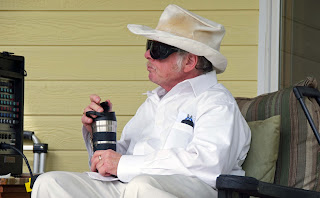rogerinblueongray

Dec 11, 2015
Oct 31, 2015
10 IDEAS for NANOWRIMO
National Novel Writing Month begins Nov 1
50,000 word in 30 days
Each year I make a list of 10 story ideas
This year I created book covers to go with the story idea
Now it is time to choose.
Sep 28, 2015
PHOTOS FROM - REDWOOD WRITERS 2015 ANTHOLOGY GARDEN LAUNCH PARTY 9/27/2015
Journeys: On the Road and Off the Map.
Amber Lee Starfire, Editor
Arlene Miller - Linda Loveland Reid
Catharine Bramkamp - I Still Wave at Planes
Dmitri - Sound Man
Marilyn Wolters - Why Not?
Stephen Bakalyar - Maserati Blues
Cristina Goulart - Stoplight
Dr. Venus Maher - The Shape of Love
Break time
Barbara Toboni - Chase at
Bat
Inga Aksamit - Upside Down in
Western Australia
Jan - Marystella
Jing Li - My Journey to America
Linda Loveland Reid - Aunt
Margaret’s Journey
Marilyn Campbell - Francine’s
World
Mary DeShazo - Space
Captain
Jan - Marystella - Cristina
Nancy Uber-Kellogg Nearly Nuked
Osha Hayden Chrysocolla Flow
Pamela Heck First Love
Skye Blaine - Left Turn
Susan Gunter - Mediterranean
Triptych
Susanna Solomon - Homecoming
Karen Hart - Last Walk
John Abbott - Measureless
Jul 2, 2015
THE STEAM ENGINE AND STEAMPUNK
July 2, 1698
The first commercial Steam Engine is Patented.
From Wikipedia
Thomas Savery (c. 1650–1715) was an English inventor and
engineer, born at Shilstone, a manor house near Modbury, Devon, England. He is
famous for his invention of the first commercially used steam powered engine.
From Wikipedia
Steampunk refers to a subgenre of science fiction and
sometimes fantasy that incorporates technology and aesthetic designs inspired
by 19th-century industrial steam-powered machinery. Although its literary
origins are sometimes associated with the cyberpunk genre, steampunk works are
often set in an alternative history of the 19th century's British Victorian era
or American "Wild West", in a post-apocalyptic future during which
steam power has maintained mainstream usage, or in a fantasy world that
similarly employs steam power.
It may, therefore, be described as neo-Victorian. Steampunk perhaps most recognisably features anachronistic technologies or retro-futuristic inventions as people in the 19th century might have envisioned them, and is likewise rooted in the era's perspective on fashion, culture, architectural style, and art.
Such technology may include fictional machines like those found in the works of H. G. Wells and Jules Verne, or the modern authors Philip Pullman, Scott Westerfeld, Stephen Hunt and China Miéville. Other examples of steampunk contain alternative history-style presentations of such technology as lighter-than-air airships, analogue computers, or such digital mechanical computers as Charles Babbage's Analytical Engine.


It may, therefore, be described as neo-Victorian. Steampunk perhaps most recognisably features anachronistic technologies or retro-futuristic inventions as people in the 19th century might have envisioned them, and is likewise rooted in the era's perspective on fashion, culture, architectural style, and art.
One of the symbols of Steampunk is the airship. Irronically today, the first Zeppelin flight
took place on 2 July 1900 over Lake Constance. Damaged during landing, it was
repaired and modified and proved its potential in two subsequent flights made
on 17 and 24 October 1900.
Such technology may include fictional machines like those found in the works of H. G. Wells and Jules Verne, or the modern authors Philip Pullman, Scott Westerfeld, Stephen Hunt and China Miéville. Other examples of steampunk contain alternative history-style presentations of such technology as lighter-than-air airships, analogue computers, or such digital mechanical computers as Charles Babbage's Analytical Engine.


Steampunk may also incorporate additional elements from the
genres of fantasy, horror, historical fiction, alternate history, or other
branches of speculative fiction, making it often a hybrid genre. The term
steampunk's first known appearance was in 1987, though it now retroactively
refers to many works of fiction created even as far back as the 1950s or 1960s.
Steampunk also refers to any of the artistic styles,
clothing fashions, or subcultures, that have developed from the aesthetics of
steampunk fiction, Victorian-era fiction, art nouveau design, and films from
the mid-20th century.Various modern utilitarian objects have been modded by
individual artisans into a pseudo-Victorian mechanical "steampunk"
style, and a number of visual and musical artists have been described as
steampunk.


Mar 1, 2015
Subscribe to:
Posts (Atom)














































